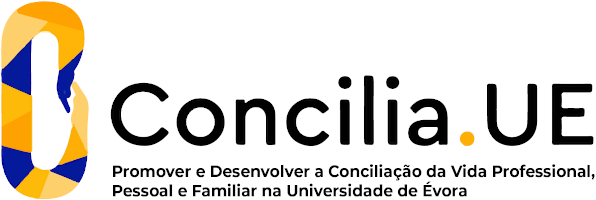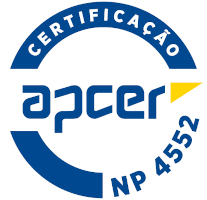2025
Materials and Structures Archaeological
Name: Materials and Structures Archaeological
Code: HIS12040L
6 ECTS
Duration: 15 weeks/156 hours
Scientific Area:
Archeology
Teaching languages: Portuguese
Languages of tutoring support: Portuguese, French, Spanish
Regime de Frequência: Presencial
Presentation
The aim of the course is that the student gets to know different types of archaeological structures, artefacts (lithic, metallic, ceramic, glass and bone) and ecofacts, in a diachronic perspective, and that they are able to identify, characterize and classify them correctly.
Sustainable Development Goals
Learning Goals
The aim is for the student to acquire knowledge and techniques for the identification, analysis, and interpretation of various archaeological remains and their chronological evolution.
Objectives:
Identification of various types of archaeological materials
Identification of the main existing structures in terms of both constituent materials and construction techniques
Awareness of the study and safeguarding of archaeological finds and structures
Knowledge of different preservation and enhancement strategies
Skills:
Mastery of the vocabulary and concepts inherent in the study of materials
Ability to identify and characterize structures and spaces
Mastery of methodologies for surveying, collecting, and inventorying in archaeology
Ability to develop research in the study of archaeological materials
Objectives:
Identification of various types of archaeological materials
Identification of the main existing structures in terms of both constituent materials and construction techniques
Awareness of the study and safeguarding of archaeological finds and structures
Knowledge of different preservation and enhancement strategies
Skills:
Mastery of the vocabulary and concepts inherent in the study of materials
Ability to identify and characterize structures and spaces
Mastery of methodologies for surveying, collecting, and inventorying in archaeology
Ability to develop research in the study of archaeological materials
Contents
I. PREHISTORY
I.1. General principles: materials, methods, and techniques
I.2. Fauna
I.3. Flaked and polished stone tools
I.4. Pottery
II. THE CLASSICAL WORLD
II.1. General principles: materials, methods, and techniques
II.2. Architecture
II.3. Techniques
II.4. Archaeological materials
III. THE MEDIEVAL AND MODERN WORLDS
III.1. General principles: materials, methods, and techniques. Background and evolution
III.2. Archaeological structures: raw materials and construction techniques
III.3. Archaeological structures: Architecture of religious, civil, and military buildings
III.4. Archaeological materials
III.4.1. The production of consumer goods and technologies
III.4.2. Pottery
III.4.3. Glass (technologies, techniques, forms, and functions)
III.4.4. Metals (technologies, techniques, forms, and functions)
III.4.5. Bone and ivory (technologies, techniques, forms, and functions)
I.1. General principles: materials, methods, and techniques
I.2. Fauna
I.3. Flaked and polished stone tools
I.4. Pottery
II. THE CLASSICAL WORLD
II.1. General principles: materials, methods, and techniques
II.2. Architecture
II.3. Techniques
II.4. Archaeological materials
III. THE MEDIEVAL AND MODERN WORLDS
III.1. General principles: materials, methods, and techniques. Background and evolution
III.2. Archaeological structures: raw materials and construction techniques
III.3. Archaeological structures: Architecture of religious, civil, and military buildings
III.4. Archaeological materials
III.4.1. The production of consumer goods and technologies
III.4.2. Pottery
III.4.3. Glass (technologies, techniques, forms, and functions)
III.4.4. Metals (technologies, techniques, forms, and functions)
III.4.5. Bone and ivory (technologies, techniques, forms, and functions)
Teaching Methods
The teaching-learning process will involve both theoretical and practical classes in a ratio of approximately (20-40 classes), alternating between content presentation by the instructor and direct engagement of students with concrete archaeological realities. This will be done through the observation of archaeological remains (artifacts, ecofacts, and structures), as well as through laboratory work and study visits to sites and monuments.
In laboratory work, there will be an emphasis on direct contact with archaeological materials, so that students can also learn the main laboratory techniques applied to each type of archaeological find.
In laboratory work, there will be an emphasis on direct contact with archaeological materials, so that students can also learn the main laboratory techniques applied to each type of archaeological find.
Assessment
Assessment can be conducted through continuous evaluation or a final exam system.
In continuous evaluation, a work will be carried out in the classroom context, applying concepts to concrete cases in laboratory practices, which will result in the corresponding laboratory report (50% of the grade) and a test assessing theoretical knowledge (50%).
The final exam will consist of a written test covering all the material taught (100% of the grade).
In continuous evaluation, a work will be carried out in the classroom context, applying concepts to concrete cases in laboratory practices, which will result in the corresponding laboratory report (50% of the grade) and a test assessing theoretical knowledge (50%).
The final exam will consist of a written test covering all the material taught (100% of the grade).





















